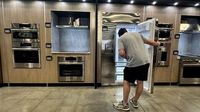Shoppers across the United States kept their wallets open in July 2025, propelling retail sales upward despite mounting economic pressures from tariffs and a slowing job market. According to a report released by the Commerce Department on August 15, 2025, retail sales rose by a solid 0.5% in July, meeting economists’ expectations and signaling that, for now, American consumers remain resilient in the face of uncertainty.
This uptick follows a revised 0.9% increase in June—higher than the previously reported 0.6%—and marks a rebound after two consecutive months of spending declines in April (down 0.1%) and May (down 0.9%). The latest numbers suggest that the country’s shoppers, while cautious, are not retreating just yet, even as they confront higher prices and a cooling labor market.
Auto dealerships saw particularly robust activity, with auto sales jumping 1.6% in July. This comes after a period of volatility earlier in the year, when President Donald Trump’s 25% tariff on imported cars and parts prompted a rush to buy ahead of price hikes, followed by a slump. Samuel Tombs, chief U.S. economist at Pantheon Macroeconomics, noted that sales appear to have returned to more normalized levels after this rollercoaster.
Excluding auto sales, which have been especially erratic due to the tariffs, retail sales still managed a 0.3% increase. The Commerce Department’s data revealed broad-based gains: clothing stores enjoyed a 0.7% rise, online retailers ticked up 0.8%, and home furnishings and furniture stores climbed 1.4%. However, not all sectors shared in the good fortune—electronics store sales slipped by 0.6%, and restaurants, often seen as a barometer of discretionary spending, saw business dip 0.4% as many consumers opted to eat at home in an effort to save money.
One category that excludes volatile sectors like gas, cars, and restaurants rose 0.5% from the previous month, a positive indicator for the Bureau of Economic Analysis’s consumption estimate. Analysts attribute some of July’s spending boost to Amazon’s annual Prime Day and competing online sales events from rivals like Target and Walmart, which spurred shoppers to take advantage of discounts and deals.
Christopher S. Rupkey, chief economist at FWDBonds LLC, told the Associated Press, “Consumers have a little more spring in their step. Whether this is simply whistling in the dark, time will tell, but the tariff headline chaos did not keep consumers at home in July with the one caveat that they reduced their dining out spending. Retail sales do not give the economy a complete bill of health, but at least the consumer is not in headlong retreat.”
Yet, there are warning signs on the horizon. The Labor Department reported earlier this month that U.S. employers added just 73,000 jobs in July—well short of the 115,000 that economists had anticipated. This slowdown, attributed partly to the uncertainty and cost increases stemming from Trump’s trade policies, has raised concerns about the broader economic outlook.
Meanwhile, inflation remains stubbornly above the Federal Reserve’s 2% target. Consumer prices in July were 2.7% higher than a year earlier, unchanged from June, while core prices (which exclude food and energy) rose by 3.1%, up from 2.9% the month before. On a monthly basis, prices increased by 0.2% in July, a slight dip from June’s 0.3%. Core prices edged up 0.3%, a bit faster than the previous month’s 0.2% increase.
These figures suggest that while some impacts of the tariffs—such as slowing rent increases and falling gas prices—are helping to keep inflation in check, businesses are still absorbing a significant portion of the added costs. However, this may not last. The Labor Department’s producer price index, which measures inflation before it reaches consumers, soared by 0.9% in July from June, marking the largest jump in more than three years and pushing wholesale prices 3.3% higher than a year ago. Many economists view this as a sign that higher consumer prices may be on the way.
Retailers, meanwhile, are at a crossroads. With major players like Walmart and Target set to report their fiscal second-quarter earnings in the week of August 18, analysts are eager to see how much of the tariff-induced cost increases are being absorbed by retailers and how much is being passed along to shoppers. The results will also offer insight into consumer behavior as the crucial fall and holiday shopping seasons approach.
Some price increases are already trickling through. In May, Walmart raised the price of bananas imported from Costa Rica from 50 cents to 54 cents per pound, warning that a more noticeable sting for shoppers would emerge in June and July. Walmart’s chief financial officer, John David Rainey, told The Associated Press that car seats made in China, previously selling for $350, might soon cost customers another $100 due to tariffs. “We were able to quickly roll out select strategic price increases that have benefited our growth,” Neil Blumenthal, co-chairman and co-CEO of Warby Parker, told analysts last week, according to reporting by the Associated Press.
Other companies, including Procter & Gamble, e.l.f. Cosmetics, Black & Decker, and Ralph Lauren, have also announced recent or planned price hikes. Some, like eyewear retailer Warby Parker, are taking a more nuanced approach. The company has opted to keep its $95 option unchanged but is raising prices on select premium lens types, particularly progressives, trifocals, and bifocals. These high-margin products make up roughly 40% of all prescription units sold industrywide, but just 23% of Warby Parker’s business. Progressives, in particular, are the company’s highest-priced offering and provide the best profit margins.
Warby Parker is also attempting to mitigate the impact of tariffs by shifting more of its production away from China, aiming to bring the percentage of goods sourced from the country to under 15% by year’s end. Still, the company faces higher tariff costs in other regions, and executives say that targeting premium products for price increases is a way to balance growth and customer retention.
As the economic landscape continues to shift, Americans are adapting in real time—seeking deals, adjusting their spending habits, and, for now, keeping the retail engine humming. But with job growth slowing, inflation pressures mounting, and more price increases likely on the horizon, the coming months will test just how long consumers can keep carrying the load.
For now, the data paints a picture of cautious optimism—one where shoppers are still out in force, but with an eye on their budgets and a wary glance at the headlines.




